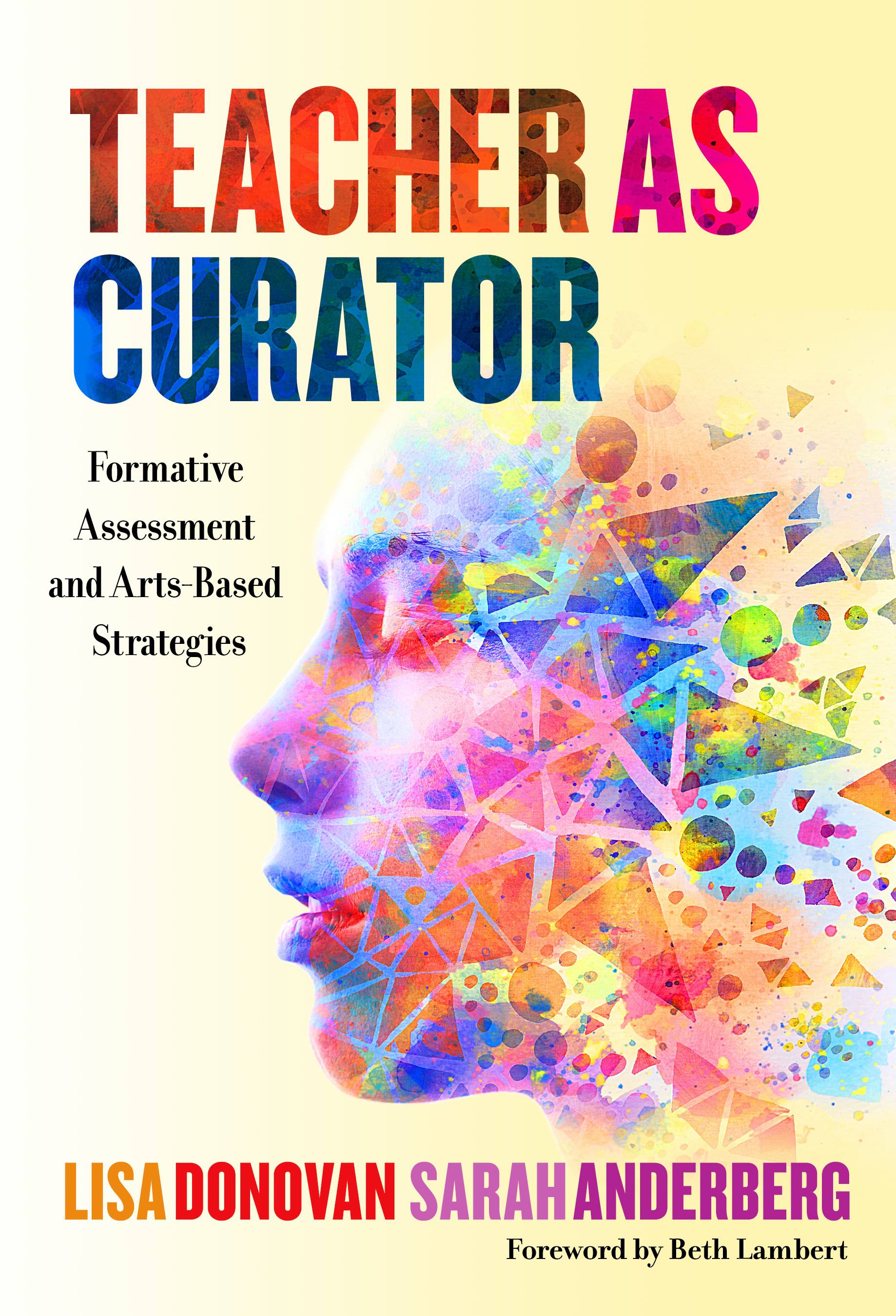
What happens when teachers adopt creative strategies in their classrooms?
MCLA Arts Management Professor Lisa Donovan’s new book, “Teacher as Curator: Formative Assessment and Arts-Based Strategies” answers this question, offering educators a road map for adopting arts integration in their classrooms, using the arts as formative assessment as well as sharing case studies that show how thinking like a curator can open new doors of understanding for students.
Co-written with Sarah Anderberg and published by Teachers College Press in October, the book builds on Donovan’s long-time work with arts integration in the classroom, from public school teachers to arts educators at museums. She’s worked with teachers across the country, from California to Maine, on protocol, strategy, and assessment around adapting the creative process for students as well as finding evidence of its benefit.
 “People sometimes struggle with assessing arts-based work, but the fact is, there’s
evidence throughout the creative process,” said Donovan. “It’s deep, layered, and
rigorous work. The way to show that is really through assessment, collection, and
sharing of evidence.”
“People sometimes struggle with assessing arts-based work, but the fact is, there’s
evidence throughout the creative process,” said Donovan. “It’s deep, layered, and
rigorous work. The way to show that is really through assessment, collection, and
sharing of evidence.”
Donovan co-directs the Berkshire Regional Arts Integration Network (BRAINworks), a grant-funded collaboration between MCLA and North Adams Public Schools, which offers professional development to Berkshire educators with a focus on arts integration. She also regularly adopts these strategies in her teaching at MCLA, working with students on assessment strategies as they design education and community arts workshops, practice grant writing, and work on arts or design community engagement plans based on case studies of cultural organizations. “This process has made me more of an intentional educator,” she said.
“It feels incredible,” that the book is out after years of work, she said. “We’re always making the case for the arts in education, so in my mind, the next right piece is assessment—so you can show that arts integration work leads to deep learning. That’s where real change can happen.”
The assessment process allows educators and administrators to map out their steps and use benchmarks to measure the evidence of their students’ connection to the material. Thinking like a curator allows teachers to step back and view the process in a holistic way. “As a curator, every choice you make, you’re selecting and categorizing and foregrounding everything, from the assignments you give to the evidence you collect to the materials you’ll use to tell the story of learning,” she said. “If teachers start to think of themselves as curators, it really invites them to claim their expertise as educators. They realize how much they’re steering and facilitating.”
Being able to help teachers identify what evidence to look for, create their own “learning story” documenting their process, and write down key moments in their students’ interactions “is a very exciting, hands-on process,” Donovan said. “When you think about yourself as a curator, map your process, it creates a feedback loop—you build reflection and create a situation where you are constantly learning. That’s the beauty of being a teacher.”